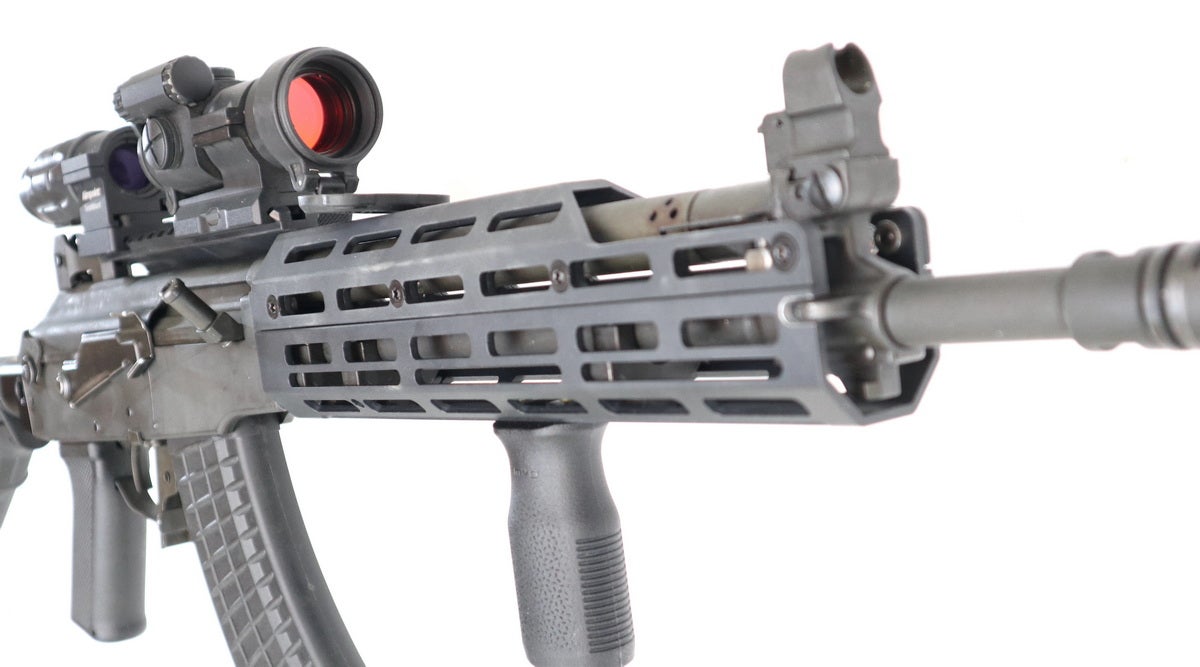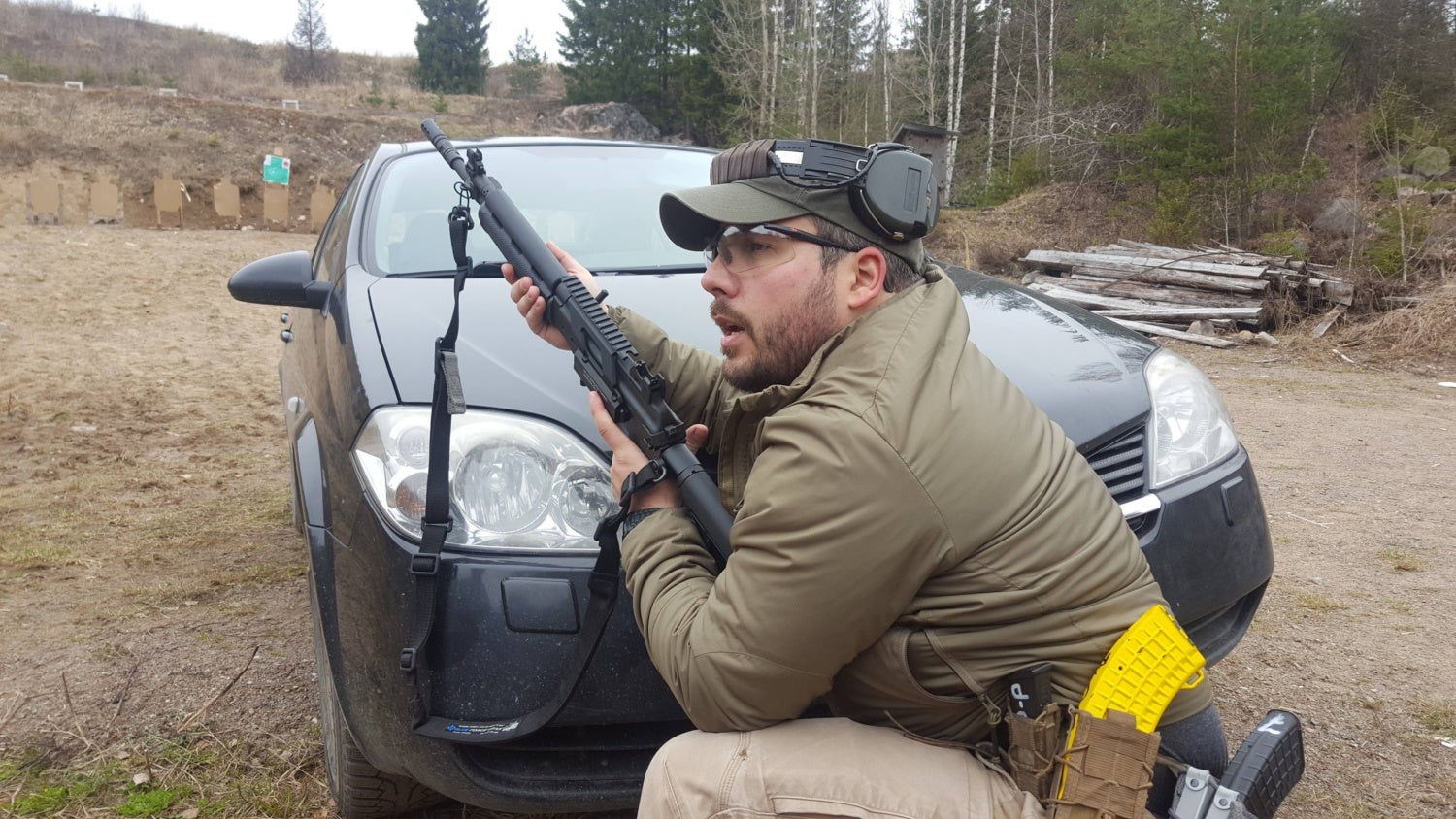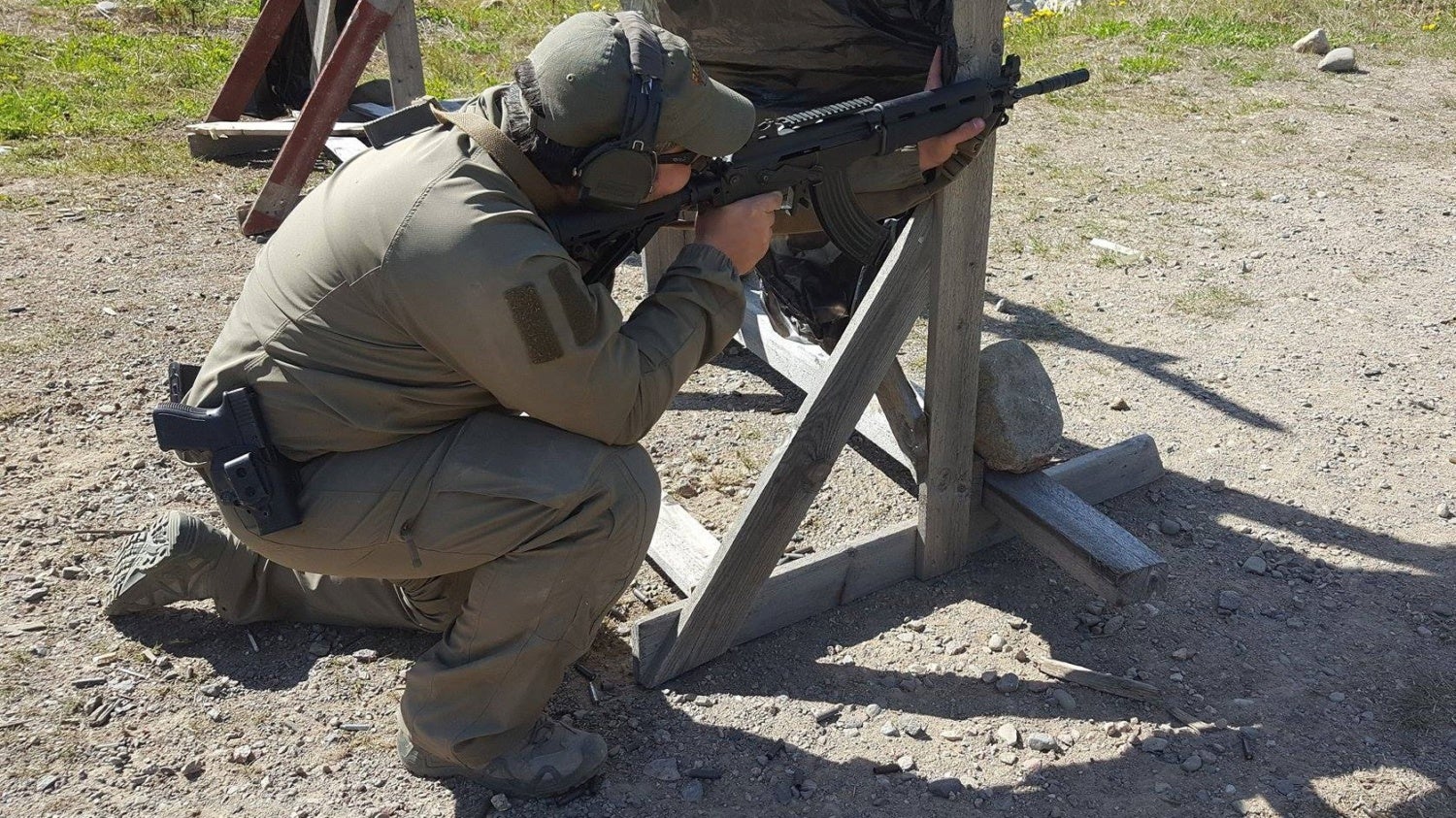In part 1 of this article, I wrote about the early development history of Finnish AKs, part 2 was dedicated to RK 60 and RK 62, and Part 3 to less-known Finnish AK variants. In the final chapter, I want to talk about the last Finnish AK, RK 95.
AK History @ TFB:
- Egyptian AKs (Misr, Maadi). Part 2: Quality, Problems, and Modernization Projects
- East Germany AKs – The Best In The World? Part 3: Less Known Variants
- Hungarian AKs (Part 4): From Wonderfully Weird to Plain and Reliable
In 1987, the state-owned factories Valmet and SAKO joined into SAKO-VALMET, with ownership split evenly between Nokia and Valmet. Later on, the SAKO brand was purchased by Beretta Holdings.
At the same time, the Finnish Defense Forces decided that the gradual modernization of RK 62 wasn’t enough, and decided to develop a new iteration of the Finnish AK. The prototype of the new rifle had a lot of upgrades, sadly not all of the changes were implemented in the production version.

RK 95 with upgraded stock
For example, during development, the rifle had a new ambidextrous safety lever, but on the mass-produced version, engineers decided to stick to the classic selector lever. The exact reason is unknown, some sources say it was because the military thought that retraining soldiers to use a new safety would be an unnecessary hassleю
The muzzle device was completely redesigned: it is a muzzle brake, and compensator, and allows a soldier to use rifle grenades. Subsequently, design engineers had to add a special lever on the gas block, that shuts down the gas port before you launched a grenade.
The full procedure was: load your mag with blank ammo, make sure a live round isn’t in the chamber, shut down the gas block to make sure all gas will be pushing the grenade, mount the rifle grenade, and shoot. Now, the interesting part is that the Finnish Army never really used rifle grenades that much.

Original RK 95 muzzle device. Photo, side mount, and stock adapter made by VALMAN.
Receivers of RK 95 rifles were reinforced in the magwell area, even though it didn’t really need any reinforcement, but the design team spared no expense.
RK 95 also has a different mag catch, that allows a right-handed shooter to push it with a trigger finger.
The charging handle on RK 95 is angled up, similar to Israeli Galil, but the design is a bit more elegant, cause you can replace the charging handle if it ever breaks.

Charging handle is one of the easiest ways to recognize RK 95, even when the rifle is heavily modified. Source
The receiver cover is redesigned even though there is no rail on it. The design engineers were concerned about the iron sights retaining zero, so on the RK 95 receiver, there is a special tightening lever on the left side.
This lever squeezes together two metal plates on the sides of the receiver cover ensuring it stays put. To disassemble the rifle, you need to rotate this lever downward.

Receiver cover retaining mechanism and optics mount. Source
The sights of RK 95 are pretty unique as well. The rear sight has 2.5 positions: 150 meters, 300 meters and the position in between that allows the shooter to see the night sight.
The solution for scope attachment is pretty unconventional as well. There are three holes in the receiver and two recesses. This allows the shooter to mount a side rail directly to the receiver.
However, optical sight with short eye relief won’t work on RK 95, since you can mount scopes in front of the rear sight, which is pretty far away from a shooter’s eye.
The stock on RK 95 TP is also a big improvement compared to RK 62. Letters TP mean that it is the version with the folding stock. The stock folds to the right side and is much shorter.
The overall design looks similar to Galil stock, but Galil itself uses FN FAL para stock. But there is a key difference – RK 95 stock is coated with plastic, so during winter soldiers don’t have to feel freezing bare metal next to their faces. Inside the stock, there is a three-piece cleaning rod.

Author, teaching a vehicle tactics course in Finland with a borrowed RK 95
There was only one production run of RK 95 rifles. Serial numbers began with 960 001 and about 20 000 were manufactured in total. By 1997, the first and only batch was made, and the factory faced uncertainty because no more orders were coming in. The Finnish government refused to place more orders, and production capabilities for RK 95 ceased to exist.
That was the end of the Finnish AK. I asked a former Valmet employee, how he feels about the fact that he witnessed the end of Finnish AK history. A tough man, who, like most Finns, rarely shows emotions, he shed a tear.

Author, shooting RK 95 in Finland
Why did it happen?
- The Finnish government decided, that they have enough guns for now, and the future does not matter. They had RK 95s for the active duty military, over 300,000 old RK 62s for the reserve troops, and a few hundred thousand East German and Chinese AKs they bought in the early 90s after the collapse of the Berlin Wall.
- Finnish Air Force procured Hornet (F/A18) aircraft from the USA at that time, and the budget was almost empty. However, the cost of continued RK 95 production would certainly be less than just one Hornet.
- The country did have a well-thought-out policy for exporting small arms. Soma Valmets were sold to Qatar and Indonesia, but overall the was little export compared to other countries manufacturing AK variants. Also, the RK 95 is a remarkable gun but was designed without regard for cost-effectiveness. It simply could not compete in price with cheap AKs that flooded the market in the 90s.

A modernized version of RK 95 that could have been in production right now. Photo and upgrades made by VALMAN.
Now, just like most other European countries, Finland found itself in a situation where the capability to produce arms might make a difference in the future of the country. And I wonder whether politicians who made the decision to kill service rifle production in Finland 25 years ago have any regrets.
 Your Privacy Choices
Your Privacy Choices